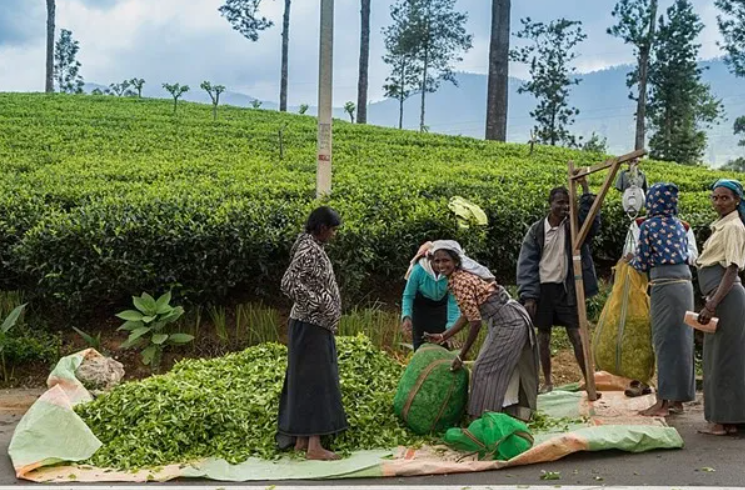Sri Lankan workers exploited, poorly paid, with the lowest wages in Asia-Oceania
A survey by the Japan External Trade Organization (JETRO) among Japanese firms that operate in the region highlights Sri Lanka’s low wages, inadequate to cover workers’ housing costs. Some 60 per cent of Japanese companies invested in the country because of its cheap labour. Meanwhile, local skilled workers continue to leave.
Colombo (AsiaNews) – Sri Lanka has the lowest wages in Asia-Oceania, this according to a survey by the Japan External Trade Organisation (JETRO) among Japanese companies operating in the region.
This is a sign of a critical situation for workers on the island nation where food inflation jumped 95 per cent based on last September's estimates, while wages continue to stagnate, showing no sign of rising.
In some garment factories, workers are paid the national minimum wage, as low as 16,000 rupees (US$ 44). Overall, the wages of migrants who move to towns to work in free trade zones are inadequate to pay even for housing.
The current wage crisis in the Asia region is worst in Sri Lanka, a country that has yet to recover from the unprecedented economic crisis of the last few years.
The JETRO survey was conducted in August and September 2023, when most companies reported an improving situation after the country’s period of great difficulty.
Notwithstanding low wages, more than 53 per cent of Japanese firms surveyed reported benefits from investing in Sri Lanka, with "fewer language and communication issues". About 30 per cent view the country as “a good living environment for Japanese expatriates”.
About 26.7 per cent of firms reported ease of recruiting staff, while 32.3 per cent said they faced challenges with human resources, the lowest percentage in the Asia-Oceania region.
The garment industry is the main drive behind Sri Lanka’s exports, accounting for 40 per cent of the total with a total turnover of US$ 5.6 billion per year.
The United States and the European Union are its largest markets, but Australia, Sweden, Japan, Canada, India, and China are also significant destinations.
The sector directly employs about 400,000 workers and indirectly another two million, with most production in free trade zones employing mainly migrant women from rural areas.
About “60 per cent of Japanese companies invested in Sri Lanka because it has the lowest average monthly salary in the Asia-Oceania region,” this according to business experts Dhanushka Thalpahewa and Lal Dissanayaka, speaking to AsiaNews.
This is the case for “manufacturing managers, non-manufacturing managers, manufacturing engineers, non-manufacturing staff, and manufacturing workers.”
Manufacturing engineers Mohan Samarawickrama and Nishantha Mannaperuma work at a garment factory in the Biyagama Investment Zone.
They believe that the "monthly salary, bonuses and prizes are important factors in choosing a job. In some garment factories, the total monthly wage ranges from 24,447 rupees (about US$ 77) to 51,324 rupees (about US$ 161, including bonuses). However, with the current high cost of living, this salary is not enough.”
Before the economic crisis, the worst since independence, garment workers were able to make ends meet despite low wages, thanks to overtime pay, attendance bonuses, and transport benefits.
“As these benefits were discontinued, the take-home pay decreased drastically. Hence, they are struggling to pay their expenses. Companies are citing low orders to limit incentives,” they say.
Nandani Weerasinghe, Dishna Aponsu, and Menike Herath of the Katunayaka Free Trade Zone note that “workers in the garment industry are required to put in 14 to 16 hours per day, seven days a week, while enduring verbal abuse from managers.
“Most of us are from rural areas and we need to pay for housing and food. With the meagre monthly pay we get, currently, we are unable to send money home. Before the economic crisis, our factories provided lunch, but now we need to buy it from the canteen, which is a great expense.”
What is more, Sri Lanka has experienced an exodus of skilled and unskilled workers since 2022 as a result of the collapse of its currency, with the Sri Lankan rupee falling to 330 against the US dollar.
18/07/2022 17:54
23/10/2023 17:54
27/08/2021 12:55







.png)










